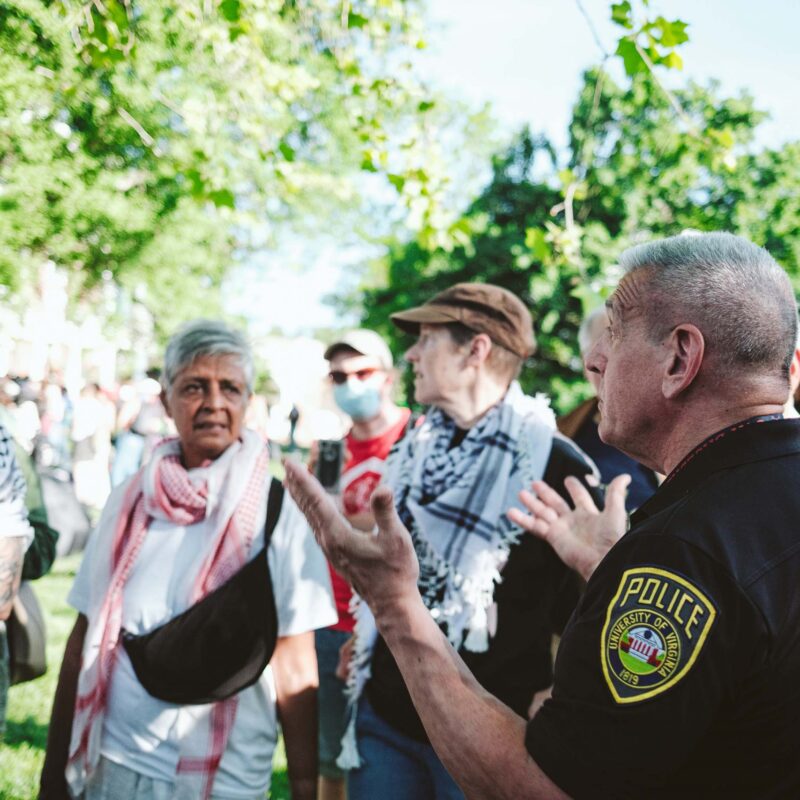A little over a year ago, the Board of Supervisors voted 5-1 to redraw the boundary lines of the growth area off of Route 29N for developer Wendell Wood, in exchange for him selling the Army 47 acres next to the National Ground Intelligence Center (NGIC) at less than market value. Or so Wood claimed. The Army had commissioned an appraisal on the land prior to its purchase but had refused to disclose the amount to the public, or even to the developer. Wood intimated to C-VILLE that the land had been appraised at around $16 million, which came to $350,000 an acre. He was only paid $7 million, which is significantly less, approximately $150,000 an acre.

Ken Boyd, chairman of the Board of Supervisors, has been hounded by Keswick resident Joseph Graham about the details of the 2006 NGIC land deal. Boyd finally broke off correspondence by offering to pray that Graham will overcome his bitterness.
|
To this date, the amount is still undisclosed, despite the best efforts of a Keswick citizen named Joseph Graham who has doggedly pursued the Army and the Board of Supervisors for the appraisal and various details surrounding the acquisition of Wood’s land and the reconstruction of the county’s growth area.
After C-VILLE’s article in March, Graham began sending e-mails to the Board of Supervisors, at first targeting Ken Boyd. To help orchestrate the final May 3, 2006 vote, Boyd had called another landowner, Clara Belle Wheeler, who had some land in the Pantops area she had asked the supervisors to move out of the development area and into the designated rural area. Her 77 acres made the Board feel a lot better about moving 30 acres for Wood to the development area. But as Graham soon discovered through e-mails with Wheeler, she is now reneging on her request.
“It is quite apparent that Ken Boyd fabricated the supposed request from Wheeler to move her land back into rural designation,” Graham wrote to Supervisor Sally Thomas, copying Boyd on the e-mail. “This fabrication was conveyed behind closed doors in secret meetings and used by the Board to rationalize an expansion of the growth area.” His e-mail ended with a question posed to Thomas: “Do you believe that Boyd was truthful with you and the other board members in his presentation of Wheeler’s non-existent deal, and if not, what is to be done about it?”
Boyd promptly responded, inviting Graham to contact him directly. A day later, Graham got right to the point. “Citizen interests were not fully represented in the apparent trade-offs of growth areas in a deal that has now collapsed,” Graham wrote. “There is a strong air of something amiss as either Wheeler or the public stands to lose while Wood and the U.S. gain.” Over the next few days, Graham and Boyd went back and forth, with their final exchange ending in a promise by Boyd to pray for Graham, in the hope, the supervisor said, of his foe overcoming his bitterness.
While corresponding with Boyd, Graham was also using official means of gathering information, filing a FOIA request with Dillard Horton of the U.S. Army Corps of Engineers. As chief acquisition officer with the Norfolk District, Horton had negotiated the purchase of Wood’s land.
As he awaited the Army’s response, Graham kept up his mission to discover the details that remained, and finally had a breakthrough on May 7, when Planning Commission Chair Marcia Joseph replied to an e-mail in which Graham asked her to request a copy of the appraisal. Joseph (who is running against Boyd for his seat on the Board of Supervisors) agreed to see if the appraisal could be requested the next time the Commission looks over the Places29 Master Plan. That will likely take place at the end of this year or early 2008.
In the meantime, Graham waits for a reply to his FOIA request (he also filed a second) and continues to press for answers to the questions that still linger around the circumstances of Wood’s expansion.
C-VILLE welcomes news tips from readers. Send them to news@c-ville.com.





